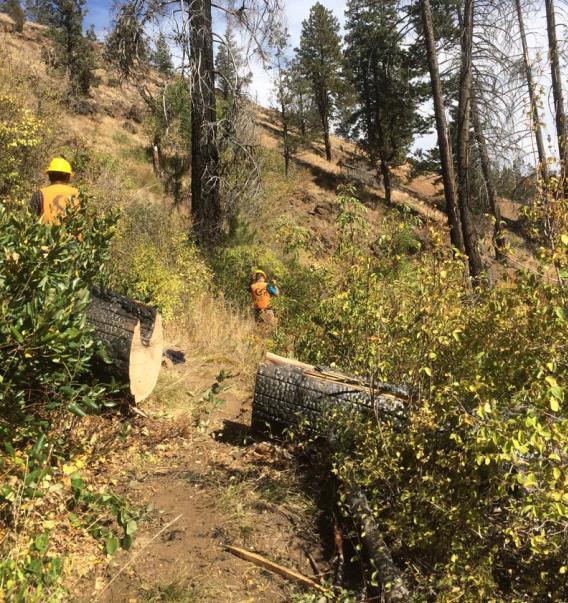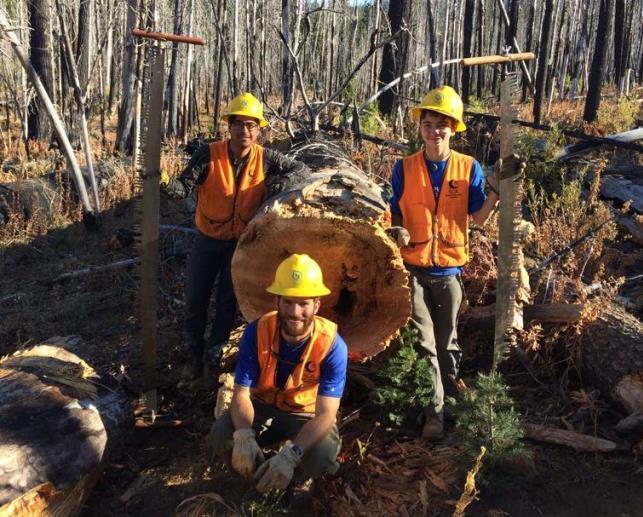In 2015, the United States had one of the worst fire seasons in recorded history, with over 9,799,444 acres burned by wildfire. While wildfire is a necessary and important part of a natural landscape, it is undeniable that wildfires can have tragic consequences on communities and adversely impact water resources, outdoor recreation resources, and fish and wildlife habitat.
Post-fire restoration can be crucial to prevent further damage and spur recovery. However, with fire suppression efforts utilizing over 50 percent of the Forest Service budget, post-fire restoration efforts are often short-changed in order to put resources towards fighting the next fire.
All too often damaged recreation resources are last on the list for attention and may go years without being restored. In the interim, erosion from damaged trails flows into streams, users further degrade habitat when they create social trails to make their way around obstructions, and restoration costs increase.
To help address some of the trail damage caused by 2015 fires, REI and the National Forest Foundation partnered on the restoration of two Oregon trail systems, one in the Black Canyon Wilderness and one in the Kalmiopsis Wilderness.

In the Black Canyon Wilderness, on the Ochoco National Forest, the 30,000 acre Corner Creek Fire damaged trails. The Black Canyon Trail and three “tributary” trails were obscured or impassable due to downed trees and debris that covered the trail as a result of the fire.
With the help of the Student Conservation Association (SCA) we restored 13.5 miles of these trails. The crew cleared the trails of debris and used cross-cut saws to remove downed trees. They brushed out areas where dead or new vegetation was encroaching on the trails and restored and improved drainage features. The crew eliminated more than two acres of social trails that had been created by users making their way around obstructions and by illegal ATV use.
In addition to the on-the-ground impacts this project had, it also provided conservation lessons, leadership skills and career training and exploration to the SCA students participating in the project. It allowed participants to do work to solve real conservation challenges, learn why their conservation and stewardship work is crucial and see the tangible results of their labor.

With help from the Siskiyou Mountain Club, we restored three miles of Kalmiopsis Rim Trail in the Kalmiopsis Wilderness on the Rogue-River Siskiyou National Forest. Portions of this trail were already in disrepair due to a prior fire. In 2015 it was further damaged by both the fire and by fire suppression efforts. Downed logs crossed the trail, and some areas of the trail were used as a base for a fireline. The trail was obscured, making way finding difficult, and in some areas was impassable. This created a gap in the 48 mile John and Lilla Leach Memorial Loop and 16 mile through-hike.
To restore the trail it was necessary to remove debris, rebuild switchbacks, repair drainage features, log out downed logs, and brush out vegetation encroaching on the trail. Along with work by a professional crew, 15 volunteers donated 250 stewardship hours.

